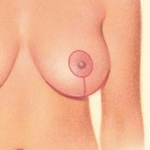Mastopexy is a safe, provided it is performed by a qualified plastic surgeon.
Is to carry out a surgical procedure to raise and improve the shape of breasts falls. Over the years, after circumstances such as pregnancy, nursing and the force of gravity make the breast tends to fall. Furthermore, as the breast skin loses elasticity and falls out of shape, a phenomenon known as breast ptosis.
When the breast, as well as lost or fall, it’s too quiet, you can also place a breast prosthesis.
In turn, the mastopexy is also possible to also reduce the size of the areola when it is very large with a diameter greater than 4.2 cm.
Mastopexy is performed in an operating room in a clinic or hospital. Income is generally required, giving the hospital the next day. It is performed under general anesthesia and takes about depending on each particular case between 2 and 4 hours.
Incisions are made around the areola, in a vertical line down from the areola and along the groove under the breast, comprising a minimum area of the breast consisting of the skin to be removed and which placed the nipple and areola in a new higher position. In certain cases, when the breast is small and little fall incision is placed only around the areola, periareolar surgery. The scars over time there will be noticing less


